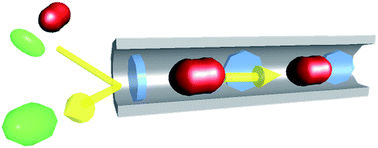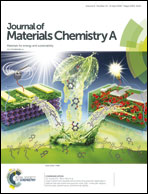Selective molecular-gating adsorption in a novel copper-based metal–organic framework†
Abstract
Porous solids have gathered much attention because of their impact on efficient separation/purification technologies. However, it is still a great challenge to separate molecules with similar physical and chemical properties using adsorbents. Flexible metal–organic frameworks (MOFs) have the potential to make a breakthrough in this technology because they can construct ordered framework structures and change their structures depending on the guest species. Here, we show the successful incorporation of “molecular gates” into one dimensional (1D) pores of a novel copper-based MOF. The MOF was formed by the stacking of bumpy 2D sheets composed of Cu(I) ions and 2,4,6-tri(4-pyridyl)-1,3,5-triazine (tpt) ligands. The 2D MOF had 1D channels along the stacking direction, and BF4 anions partitioned the 1D channels to form restricted nano-space. By in situ XAFS and XRD analyses, it was revealed that the molecular gates open/close the pore windows depending on the species of adsorbates retaining the framework structure through the adsorption, resulting in selective adsorption. The MOF adsorbed 1.2 mmol g−1 (273 K) and 0.9 mmol g−1 (303 K) of CO2 at 100 kPa and showed almost no N2 and H2 uptake at 300 K and 100 kPa. Furthermore, the MOF showed gas/liquid phase selective adsorption properties (e.g. methanol adsorption from a methanol/1-propanol/1-butanol ternary liquid mixture with selectivity SMeOH/1-PrOH ∼61), which were evaluated by theoretical calculations and GC experiments.



 Please wait while we load your content...
Please wait while we load your content...